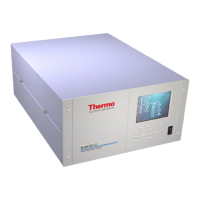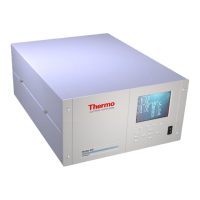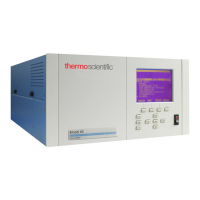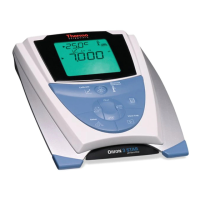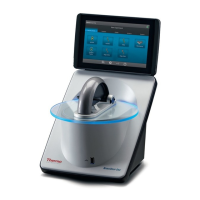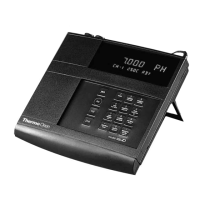MS Detector Maintenance
'JOOJHBO-52
_________________________________________________________ API Source Maintenance
_______________________ Finnigan LTQ Hardware Manual ______________________
4-7
5IFSNP
&-&$530/$03103"5*0/
4.3 API Source Maintenance
The API source requires a minimum of maintenance. Periodically, you need to
clean the components of the API source to remove salts or other
contaminants. The frequency of cleaning the API source depends on the types
and amounts of samples and solvents that are introduced into the instrument.
Maintenance procedures are provided below to do the following:
• Flush the sample transfer line, sample tube, and API probe
• Flush the ion sweep cone (or spray cone) and the bore of the ion transfer
capillary
• Remove and clean the ion transfer capillary
• Maintain the API probes, including replacing the sample tube
• Maintain the PhotoMate light source, including replacing the VUV lamp
• Maintain the ion source interface, including replacing the ion transfer
capillary and heater
Flushing the Sample Transfer Line, Sample
Tube, and API Probe
You should flush the sample transfer line, sample tube, and API probe at the
end of each working day (or more often if you suspect they are contaminated)
by flowing a 50:50 methanol:distilled water solution from the LC through the
API source.
To flush the sample transfer line, sample tube, and API probe, follow the
procedure described in the topic Flushing the Sample Transfer Line,
Sample Tube, and API Probe on page 3-6.
Flushing the Ion Sweep Cone and Ion
Transfer Capillary
You need to clean the ion sweep cone (or the spray cone, if the ion sweep cone
is not installed) and the ion transfer capillary on a regular basis to prevent
corrosion and to maintain optimum performance of your API source. A good
practice is to flush the ion sweep cone and ion transfer capillary at the end of
each operating day after you flush the sample transfer line, sample tube, and
API probe with a 50:50 methanol:water solution from the LC. To clean the ion
CAUTION. AVOID EXPOSURE TO POTENTIALLY HARMFUL
MATERIALS. Always wear protective gloves and safety glasses when you
use solvents or corrosives. Also, contain waste streams and use proper
ventilation. Refer to your supplier’s Material Safety Data Sheets (MSDS) for
procedures that describe how to handle a particular solvent.
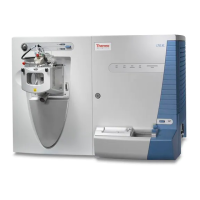
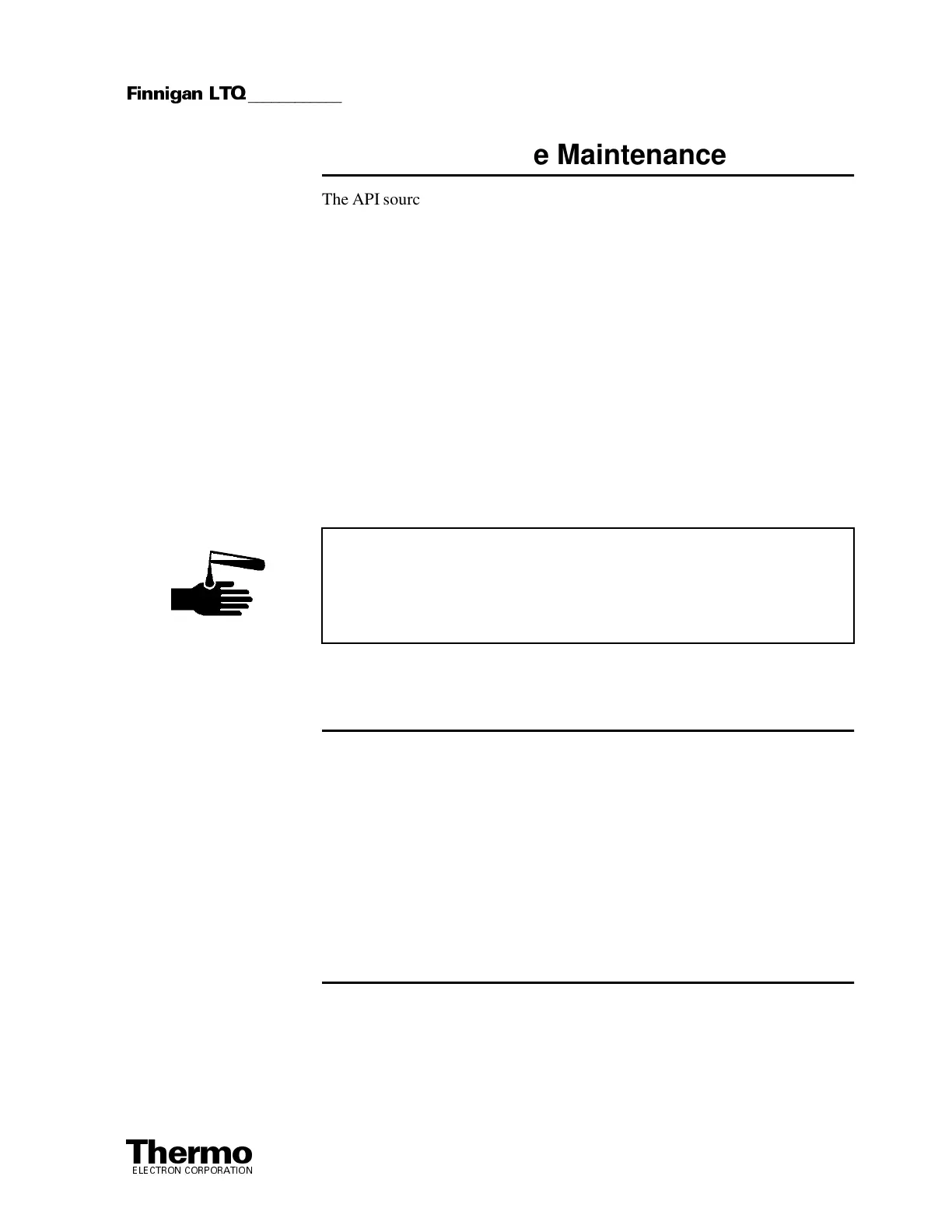